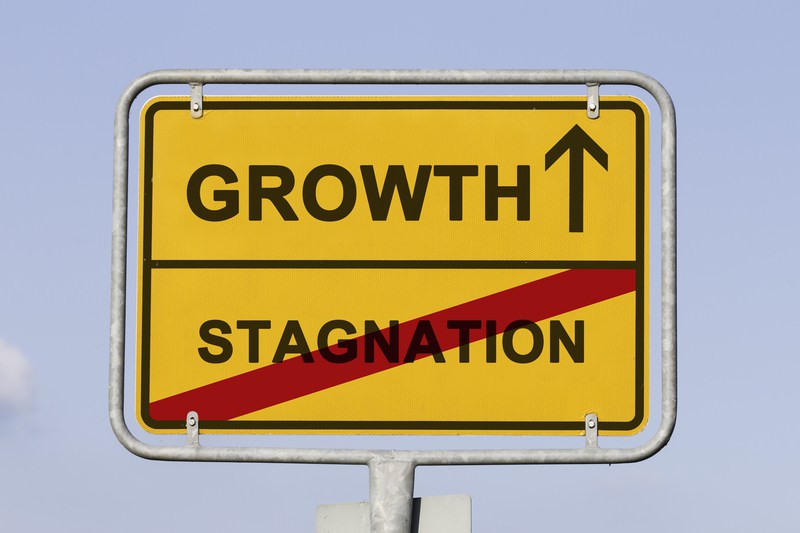Investec Switzerland. The Swiss economy returned to growth at the end of last year as it fought off the impact of a currency shock that had threatened to push the country into a recession. Gross domestic product rose 0.4 percent in the three months through December, after contracting 0.1 percent in the prior quarter, the State Secretariat for Economic Affairs in Bern said on Wednesday. That’s the strongest quarter in a year and beats the median economist estimate for a 0.1 percent increase. © Lightdreams | Dreamstime.com Despite the better-than-forecast performance in the fourth quarter, the economy still suffered its worst year since 2009. That can be traced in part to last January, when the Swiss National Bank abolished its currency cap, sending the franc surging and hitting exports to the euro area. Moreover, the unemployment rate touched a five-year high, a potential blow to an economy that has relied on domestic consumption in recent years. “The franc shock isn’t fully digested, but the Swiss economy is in a robust state,”said Cornelia Luchsinger, an economist at Zuercher Kantonalbank. “A year ago no one would’ve thought 2015 would wind up being as good as it was.” China Headwinds Adding to the headwinds has been a slowdown in China and other emerging markets, on which some Swiss exporters had pinned their hopes in a bid to offset weak demand in Europe.
Topics:
Investec considers the following as important: Business & Economy, Editor's Choice, Investec Switzerland, Swiss economic growth, Swiss GDP growth
This could be interesting, too:
Investec writes The global brands artificially inflating their prices on Swiss versions of their websites
Investec writes Swiss car insurance premiums going up in 2025
Investec writes The Swiss houses that must be demolished
Investec writes Swiss rent cuts possible following fall in reference rate
The Swiss economy returned to growth at the end of last year as it fought off the impact of a currency shock that had threatened to push the country into a recession. Gross domestic product rose 0.4 percent in the three months through December, after contracting 0.1 percent in the prior quarter, the State Secretariat for Economic Affairs in Bern said on Wednesday. That’s the strongest quarter in a year and beats the median economist estimate for a 0.1 percent increase.

© Lightdreams | Dreamstime.com
Despite the better-than-forecast performance in the fourth quarter, the economy still suffered its worst year since 2009.
That can be traced in part to last January, when the Swiss National Bank abolished its currency cap, sending the franc surging and hitting exports to the euro area. Moreover, the unemployment rate touched a five-year high, a potential blow to an economy that has relied on domestic consumption in recent years.
“The franc shock isn’t fully digested, but the Swiss economy is in a robust state,”said Cornelia Luchsinger, an economist at Zuercher Kantonalbank. “A year ago no one would’ve thought 2015 would wind up being as good as it was.”
China Headwinds
Adding to the headwinds has been a slowdown in China and other emerging markets, on which some Swiss exporters had pinned their hopes in a bid to offset weak demand in Europe. Exports of pricey Swiss watches, popular in China and Hong Kong, experienced their first annual drop since 2009 last year.
As for the machine, electrical and metals companies, industry body Swissmem termed 2015 an “annus horribilis” and reported a 14 percent slump in new orders. Still, it said the sector would probably experience a medium-term recovery “if exchange rates and business trends do not worsen any further.”
“The franc is strong and the fact that the Chinese economy and the emerging markets are slowing down doesn’t help Swiss exporters,” said Ipek Ozkardeskaya, an analyst at London Capital Group. China “has an impact on the Swiss economy — more so than the euro zone or Britain,” she said.
Household consumption and that of non-profit organizations reported growth of 0.1 percent in the fourth quarter compared with the third, the SECO data showed. Government expenditure increased by 0.6% and exports of goods excluding non-monetary gold, valuables and merchanting rose by 2.9 percent. Third- quarter GDP had initially been reported as stagnating.
SNB Policy
With the franc cap gone, the SNB has relied on negative interest rates and a pledge to intervene to keep the currency in check. The franc has weakened to an average of almost 1.10 per euro so far this year — versus 1.079 in the second half of 2015. It traded at 1.08424 at 8:12 a.m. in Zurich on Wednesday.
The issue for the SNB is the European Central Bank, which is forecast to increase stimulus again this month. That could weaken the single currency versus the franc and push Swiss central bank President Thomas Jordan to loosen policy in response.
The SNB’s deposit rate is already at a record low of minus 0.75 percent, yet SNB officials have said there’s potentially still room for a cut. Another alternative would be to lower the amount of bank reserves that are exempt from the negative rate, an option confirmed by Jordan in an interview last week.
Annual growth was 0.9 percent in 2015, according to the SECO’s provisional estimate. The SNB forecasts growth will accelerate to 1.5 percent this year.
By Catherine Bosley, with assistance from Joel Rinneby. (Bloomberg)
